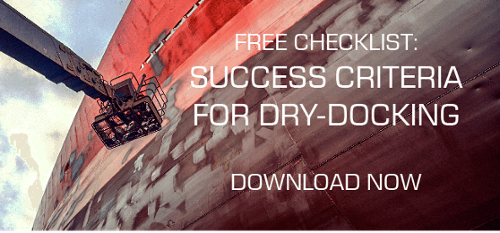
Bow thrusters are one of the most critical parts of a vessel and are often a costly part to repair. Proper maintenance is therefore crucial for any vessel. Here is 3 tips about thruster maintenance and repair.
1. How often do your thrusters need service?
There is no definite answer to this question, as it ultimately depends on factors unique to your vessel.
Our general advice is to access the thruster room at least twice a year or after x hours at sea, to check for damages and corrosion.
This might seem excessive to some, but remember that the thrusters, although designed to live a long life, are subject to immense operational impact.
It is not uncommon for a thruster to suffer many small damages due to thermal cycles, vibrations and loads. However, if this isn’t discovered at an early stage, the damage and cost of repair will increase exponentially.
The fact is that many don’t perform service on their thrusters before experiencing an increase in pressures, temperatures or vibrations. However, at that point the thruster has already suffered significant damage and repairs will be more comprehensive and time-consuming.
As a result, repairing the thrusters is often the most expensive part of the docking process.
In worst case scenario the thrusters can suffer a complete breakdown. This can happen a couple of weeks or even a few days after you identify, as mentioned above, a change in pressure, temperature or vibrations.
Luckily there are several preventative measures you can implement to avoid this.
2. Preventive Maintenance on Thrusters
Firstly, you need to implement routines to check the thrusters on a regular basis. Most small damages don’t require dry docking, so frequent inspections will save you a lot of time and money.
You can find the appropriate time intervals for your vessel by investing in a Condition Monitoring (CM) software or a Planned Maintenance System (PMS).
During the service, the maintenance crew should look for:
- Moisture or leaks in the thruster compartment as this can cause rust and deterioration
- The engine should be checked for corrosion
- Thrusters and propellers should be inspected for cracks
- Also, make sure that the propellers aren’t loosening or that oil is leaking on the shafts.
If you are using a DP software, you can significantly decrease the wear and tear on the thrusters by using the relaxed/economical modes rather than the high precision mode.
Read also: Economy in planning your yard stay
3. What to expect from the shipyard
Shipyards may have different routines when dealing with thruster repair and maintenance. Additionally, the thruster-type sets some requirements concerning how the work can be conducted. This means you might experience some differences in the maintenance work depending on the shipyard and the type of vessel.
It’s important to know that while the processes may differ, the service requirements are the same.
In some cases, it might be enough for the shipyard to merely assist your crew in the maintenance work, other times they might take on the full project. But even if that is the case, the maintenance program can never be a guarantee against damages or thruster failure.
Read also: Which factors should determine your choice of shipyard and dry-dock?
Regular maintenance will however often mean that the repair work takes less time and cost less money. It will also enable you to schedule the repair at a convenient time instead of rushing to dock with a nonfunctional thruster.
This article is previously published and updated, to the pleasure of our new readers.
Image: Jon Arne Wold/Woldcam, Equinor





